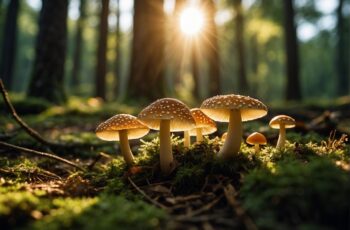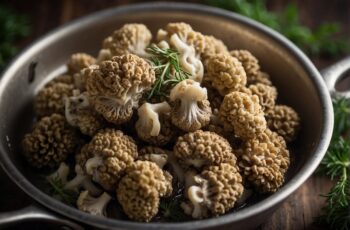Understanding what mushrooms deer will eat is essential for anyone interested in deer behavior, their diet, or even gardening in deer-inhabited areas. Deer are not just opportunistic feeders; they play an important role in forest ecology by dispersing spores and aiding in the decomposition process. What is fascinating is that these creatures have an extensive diet and can consume a wide variety of mushroom species, some of which are even toxic to humans.

Observing the interaction between deer and their habitat offers insightful revelations about the dietary preferences of deer. Since most mushrooms grow in early spring and late fall, the observant outdoorsman might notice deer indulging in these fungal treats during these seasons. Deer seem to select mushrooms based on nutritional content, availability, and potentially the ability to detect toxins. This dietary decision-making enhances their nutrition intake while avoiding harmful substances.
Key Takeaways
- Deer have a broad diet and consume a variety of mushrooms, including some that are toxic to humans.
- Seasonal growth patterns of mushrooms influence when deer are most likely to feed on them.
- Deer select mushrooms based on nutrition, availability, and possibly a capability to detect toxins.
Diversity of Deer Diet and Mushroom Species
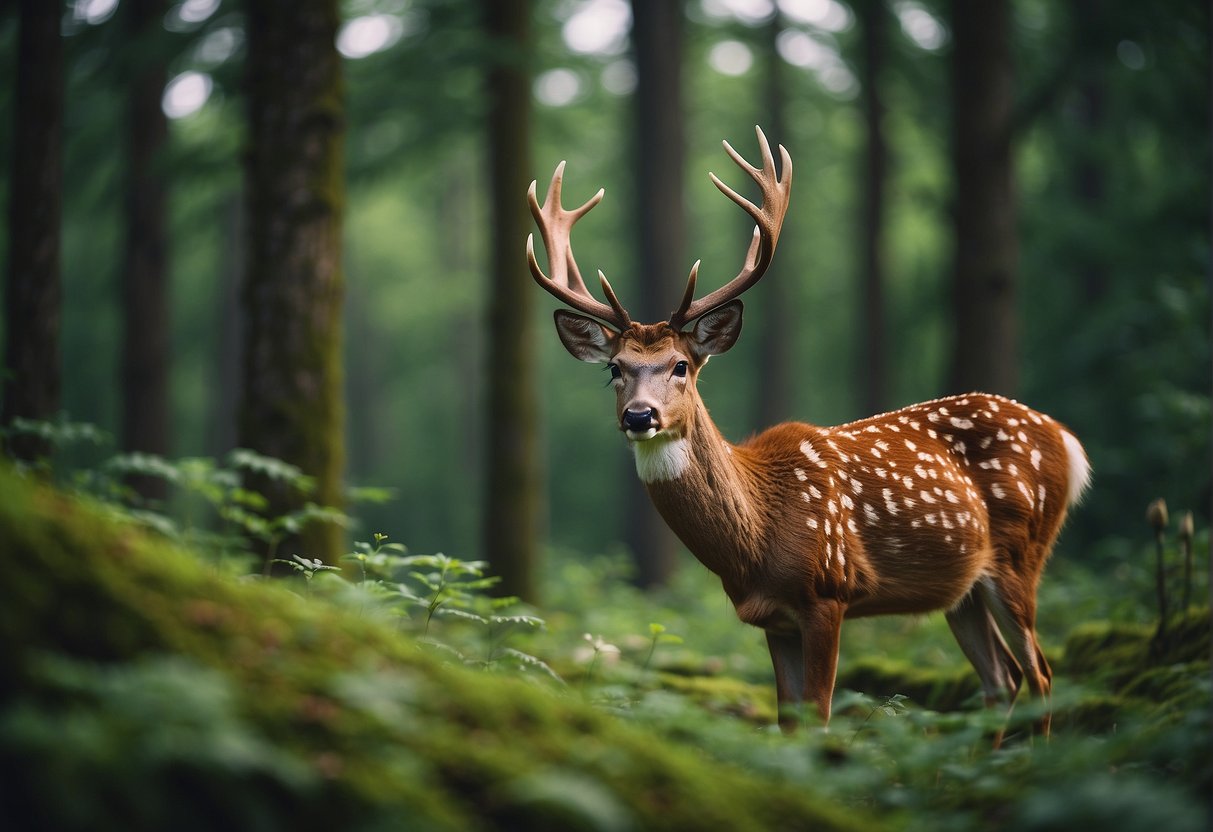
Deer have a varied diet that includes a multitude of fungi species, some of which provide high nutritional value and are frequently found across different seasons and habitats.
Common Mushroom Types Consumed by Deer
Your awareness of deer diet must include an understanding that these animals are not picky when it comes to edible mushrooms. Among the varieties, morel mushrooms stand out as a seasonal favorite in spring, while puffball, oyster, and bolete mushrooms are also common in a deer’s diet. Less frequently, deer may come across and consume shiitake mushrooms, although these are not as common in the wild. This preference for a diverse diet including various fungi adds significant nutrition to their overall intake of plants.
- Morel Mushrooms: Sought after in spring.
- Puffball Mushrooms: Available in various sizes and locations.
- Oyster Mushrooms: Found on decaying wood.
- Bolete Mushrooms: Identified by their sponge-like undersides.
Habitat and Seasonal Availability
You should note that a deer’s habitat greatly influences the types of mushrooms it eats. Deer inhabit forests, woods, meadows, and wetlands, with each environment offering different fungal treats. Seasonal availability and environmental conditions affect mushroom growth. Morels, for instance, peek out in the damp woodlands during the spring months. In contrast, fall brings a bounty of other species. Understanding this seasonality informs you of when and where to find mushrooms if you’re foraging in areas that deer frequent.
Nutritional Benefits and Risks
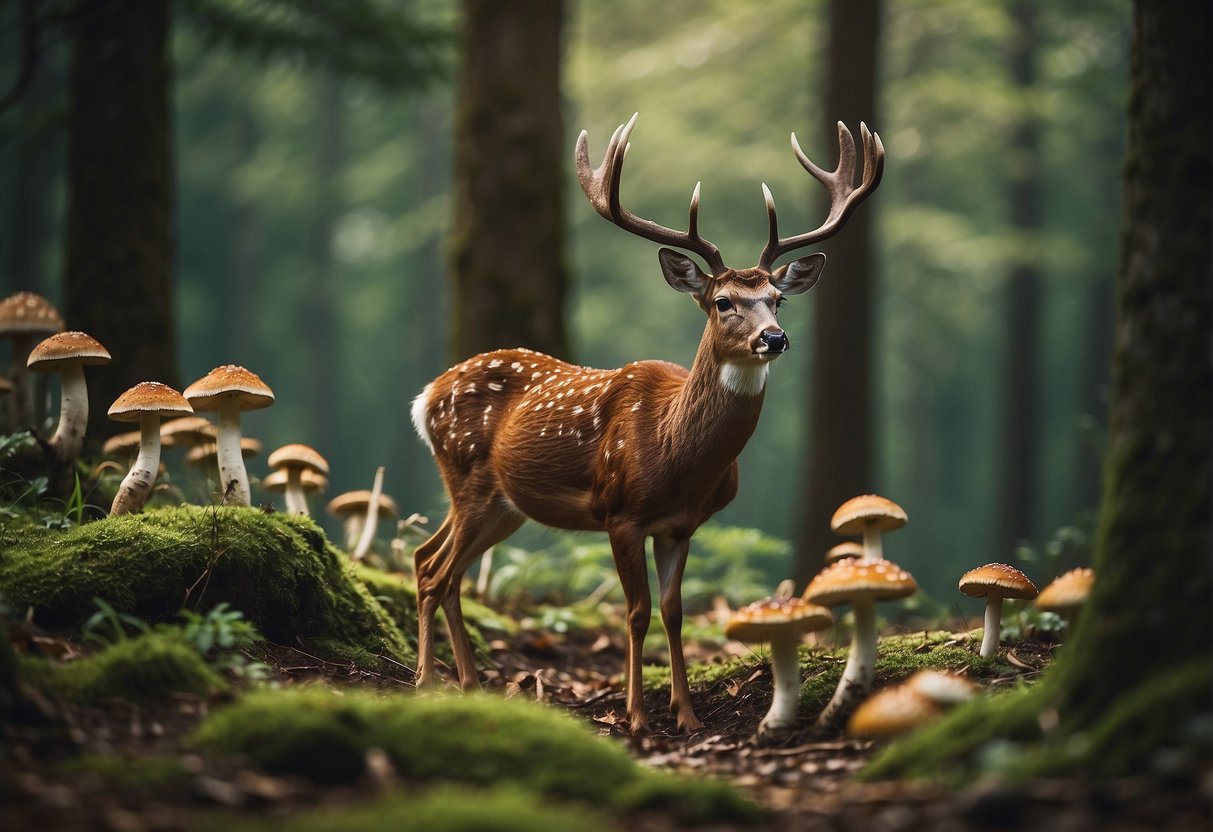
When considering what deer eat, it’s crucial to understand the nutritional benefits and potential risks involved. The consumption of mushrooms can offer deer essential nutrients yet may also expose them to harmful toxins.
Essential Nutrients and Minerals
Mushrooms can be a beneficial part of a deer’s diet, providing them with various essential nutrients and minerals that contribute to their overall health. Some of the key nutritional components that deer can obtain from mushrooms include:
- Proteins: Vital for the repair and growth of tissues.
- Vitamins: B vitamins in mushrooms can help support deer’s energy levels and immune system.
- Minerals: Such as iron, phosphorus, potassium, selenium, and copper; critical for bone strength, muscle function, and neurological health.
- Hydration: Mushrooms have a high water content, helping with hydration.
Remember, the availability of these nutrients in mushrooms can vary widely, depending on the mushroom species.
Poisonous Mushrooms and Toxins
However, not all mushrooms are safe to eat. Deer are known to consume various wild fungi, some of which are poisonous mushrooms containing risky toxins. Toxic mushrooms can cause adverse effects, potentially leading to:
- Gastrointestinal upset, impacting deer’s nutrition absorption and overall health.
- Toxicity issues: Some mushrooms contain compounds that can be toxic to a deer’s liver or nerve cells.
- Death: Ingestion of highly toxic mushrooms can be fatal for deer.
For example, while deer have been observed to eat mushrooms that are dangerous to humans without apparent harm, some species contain toxins that can be harmful even to a deer’s robust digestive system. Always be cautious when identifying mushrooms in the wild, as mistaking poisonous varieties for edible ones could pose serious risks to the health of both deer and humans.
Deer Feeding Behavior and Mushroom Selection
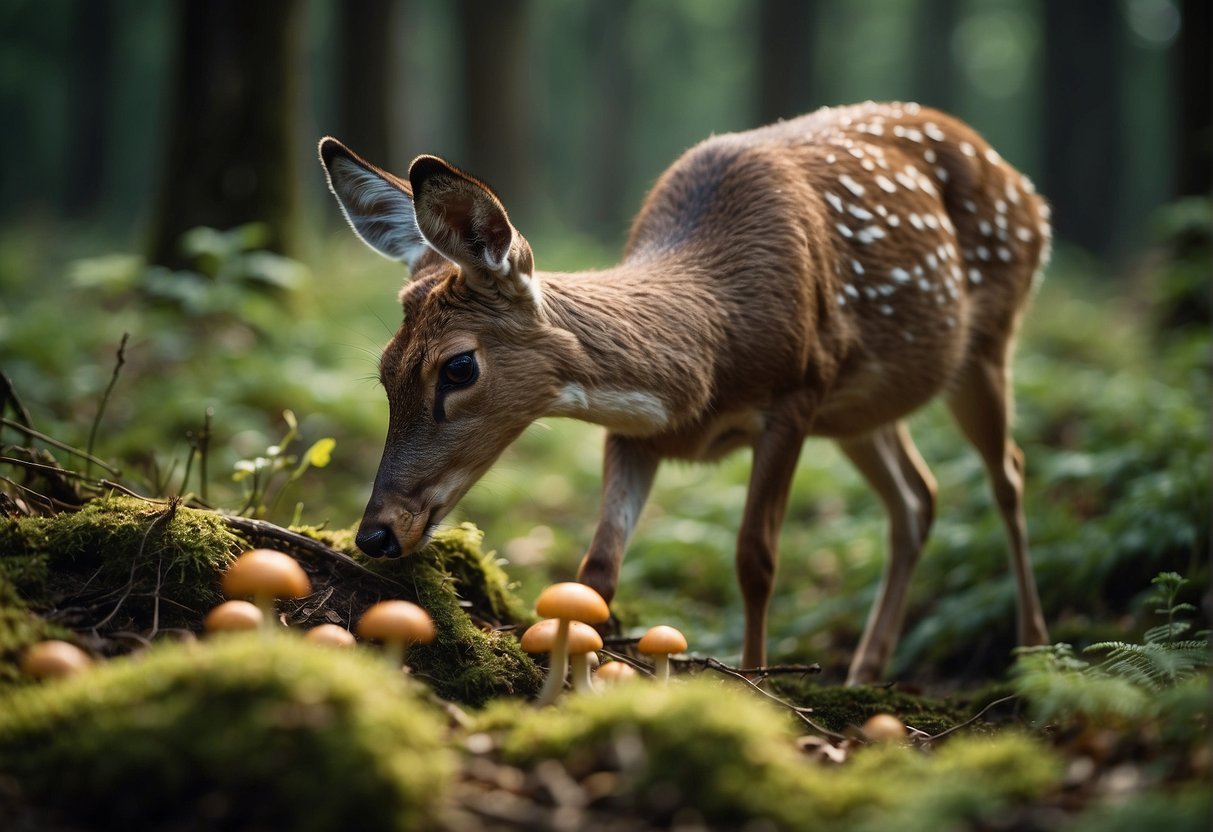
When you’re in the field, understanding the mushroom selection of deer can be as fascinating as spotting the animals themselves. Deer exhibit specific preferences and behaviors when it comes to their diet, and fungi play a notable role.
Palatability and Dietary Preferences
Deer have evolved to be rather opportunistic feeders, making use of a wide array of vegetation including forbs, browse, and to the delight of many outdoorsmen, mushrooms. The edible species like white mushrooms, chanterelles, and morels are particularly palatable to deer, largely owing to their flavor, taste, and texture. These fungi not only provide a change of palate for deer but also contribute to their overall well-being due to their nutritional value.
Foraging Strategies and Adaptations
Deer use a variety of foraging strategies, adapting to the grasslands and forests they inhabit. Does and fawns alike are skilled at seeking out mushrooms, often found on woodland floors. Deer’s diets are composed of a balance of nutrition, and while they feed on palatable mushrooms, they also consume other plant species to meet their dietary needs. This approach helps them to maintain health throughout various seasons, which is vital for their survival and the health of the ecosystem.

